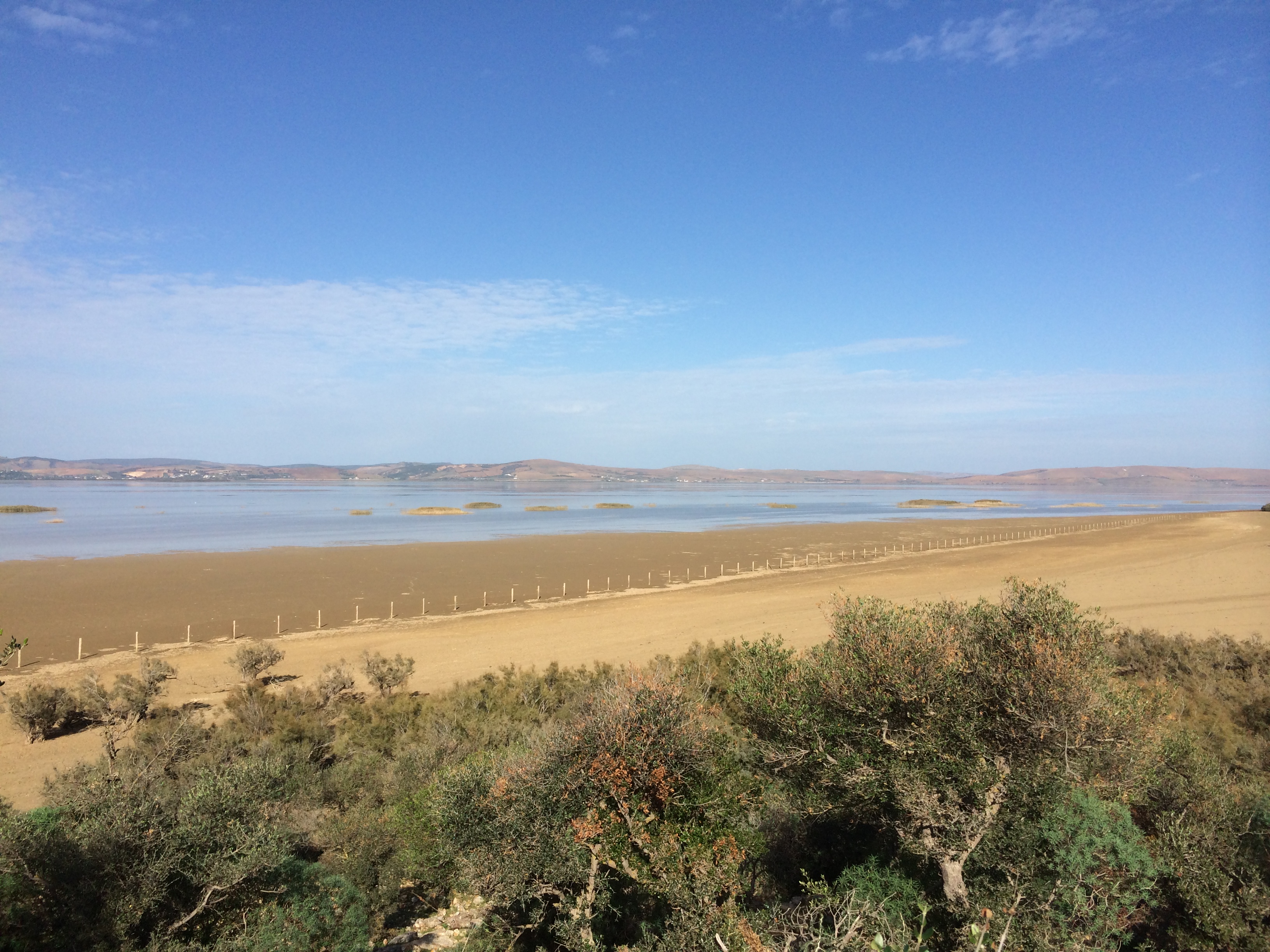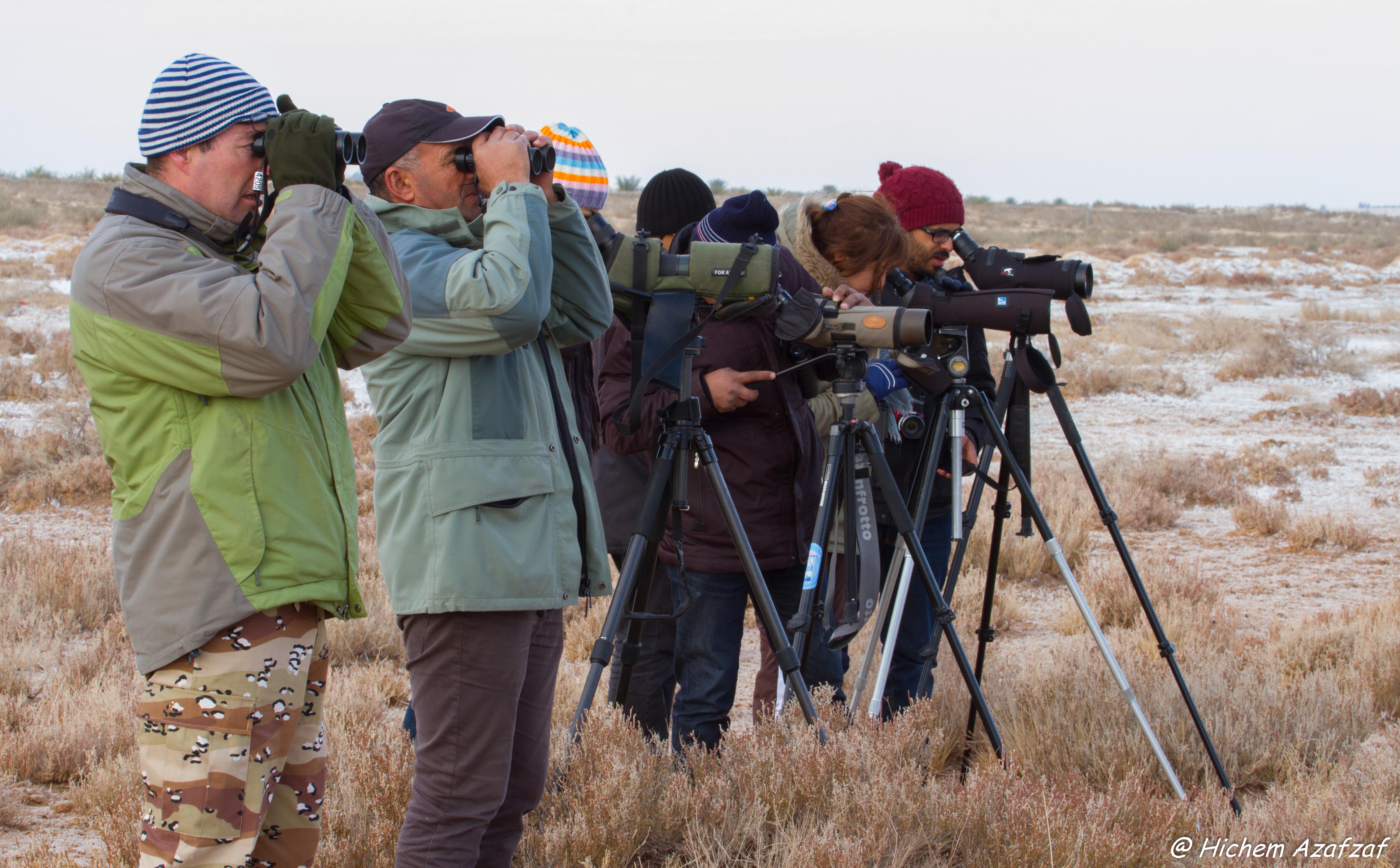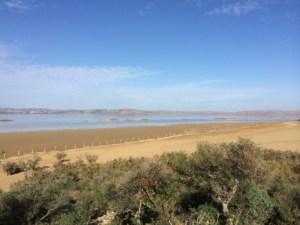The partners of the Medwaterbirds network marked a major step in Tunis in late November 2014, when they met up to assess the first phase of the International Waterbirds Census (IWC) programme in North Africa.
The Medwaterbirds network is a joint initiative of the Tour of the Valat, the French National Hunting and Wildlife Office (ONCFS) and Wetlands International, aimed at supporting the International Waterbirds Census (IWC) programme in the Mediterranean Basin, in particular North Africa.
North Africa is a high-priority bird conservation region, potentially hosting nearly 2 million wintering waterbirds. It is also an indispensable staging post for waterbirds migrating between Europe and sub-Saharan Africa, before crossing the Sahara or the Mediterranean.

Lake Ichkeul in Tunisia, a priority Ramsar site for the migrating birds in the Mediterranean bassin (© H. Azafzaf)
Despite the absence – against their will – of the Libyan partners, the Tunisian Friends of Birds Association (AAO), the Moroccan Birds Protection Research Group, the Algerian General Directorate of Forests, the Egyptian Environmental Affairs Agency, the Tour du Valat and the ONCFS were able to discuss the analysis and perspectives of the national IWC programmes of the five North African countries.
In addition to a better understanding of the factors affecting the spatial distribution of the region’s waterbird populations, this regional scale analysis seems to provide a positive reassessment of the populations of Marbled Duck (Marmaronetta angustirostris), White-headed Duck (Oxyura leucocephala) and Ferruginous Duck (Aythya nyroca), for which recent bird counts in the region were higher than the published population estimates for that migration route.
The results are globally positive because in Tunisia, Morocco and Algeria, there was an increase in the numbers of sites monitored and birds counted between 2013 and 2014. In Libya, because of security problems, few sites could be covered. However, the motivation and personal investment of our local partners, who strive to continue the programme despite the very difficult conditions, deserve to be highlighted. A field visit to Lake Ichkeul (Tunisia) showed the exceptional importance of this national park for wintering Palearctic ducks, geese, swans and coots, and the considerable investment being made by Tunisia for managing the area.
Right from this month of April 2015, the first decisions to come out of this workshop were implemented with the Algerian, then Tunisian, and then Moroccan partners coming to help prepare the analysis of the historical data to enable the estimation of population trends, especially for some emblematic or threatened species.
This work will be headed by Laura Dami, who became the new coordinator of the Mediterranean IWC support programme in mid-April.

Census and identification of shorebirds in Tunisia in January 2015, with the support of the Tour du Valat (© H. Azafzaf)
In the framework of this programme, the collaboration with the Tunisian AAO was continued this year with the aim of providing support for training on the identification of waders (shorebirds). In January, expert ornithologist Yves Kayser spent 10 days in Tunisia with our Tunisian and also Libyan partners to help build their wader identification and census capacities. This training course was held in parallel with the International Waterbirds Census in Tunisia.
Moreover, at the Second Symposium on the conservation of marine and coastal birds in the Mediterranean, which was held from 19th to 22nd February this year in Hammamet, Tunisia, Hichem Azafzaf (AAO, Tunisia) and Clémence Deschamps (Tour du Valat) presented the first results of the analysis of the programme. Co-organised by the Centre of regional activities for specially protected areas (CAR/ASP), the Tunisian Friends of Birds Association (AAO), the French Coastal Protection Agency (Conservatoire du littoral), Medmaravis and the Tour du Valat, it was attended by 50 participants from 13 Mediterranean countries.
The symposium particularly focused on the conservation of Bird species listed in the SPA/BD (Specially Protected Areas/Biodiversity) Protocol, Annex II of the Barcelona Convention. It was the opportunity for assessing and discussing the monitoring of these species (wintering areas, colonies), and also the techniques used to determine the protected areas essential for their conservation. The Medmaravis General Assembly, which took place on this occasion, marked the re-launching of the association and its actions, centred on research into and the conservation of coastal ecosystems and seabirds in the Mediterranean.
Contact: Laura Dami (e-mail [1]), “Waterbird Monitoring -Mediterranean Region” Project Leader
